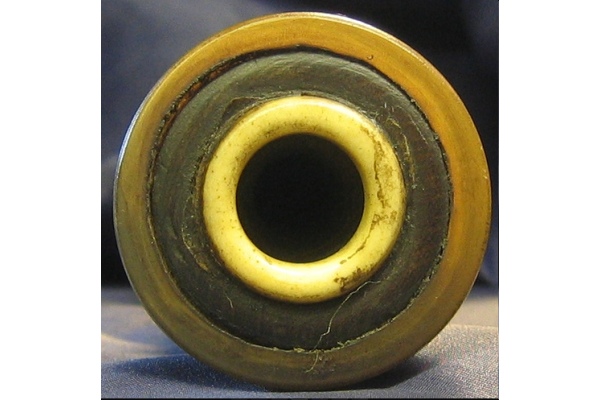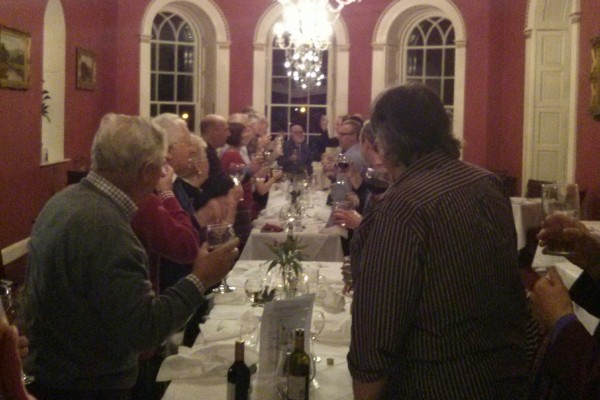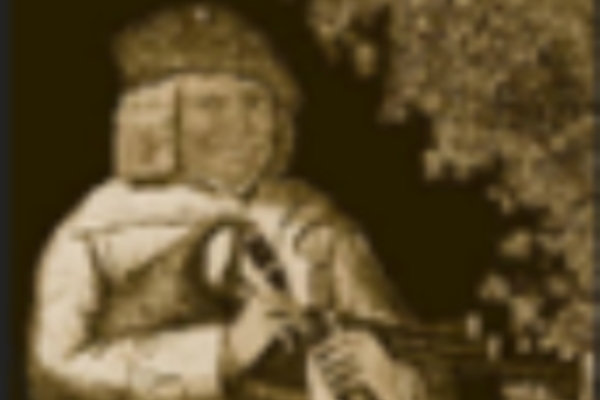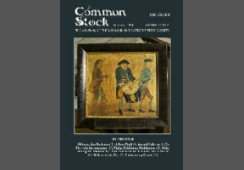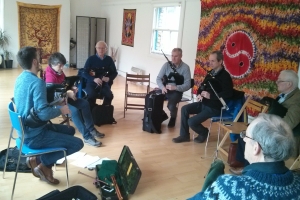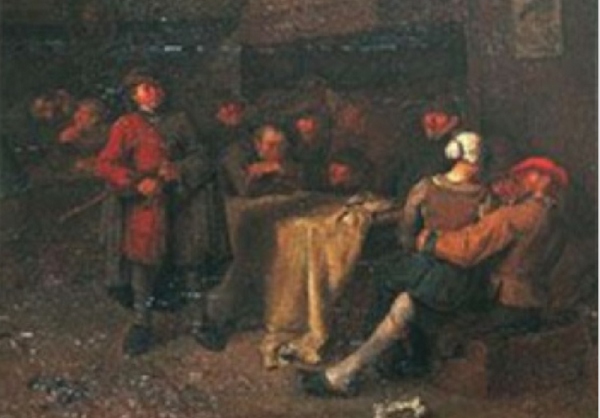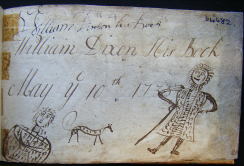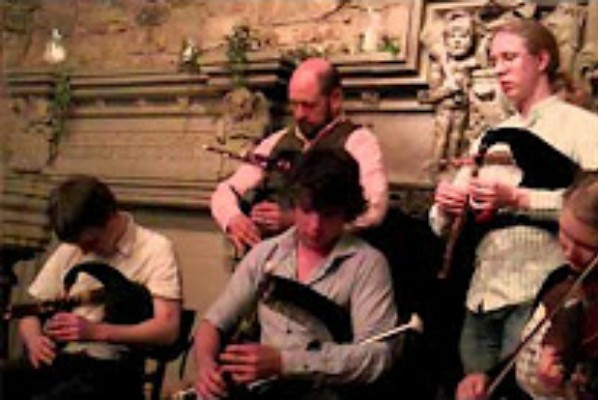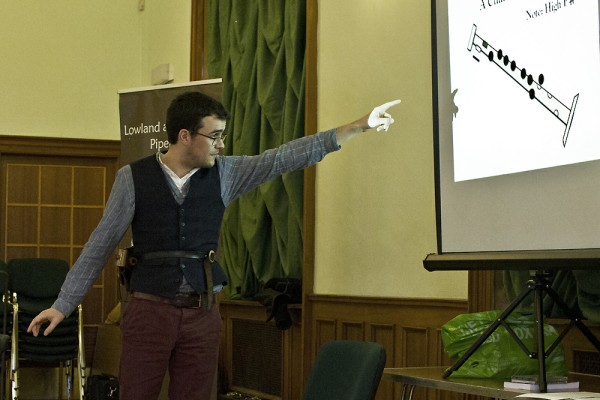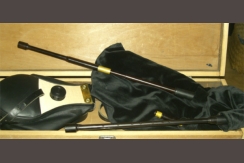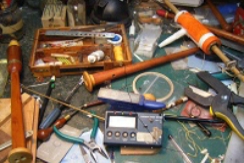In the summer of 1633, Charles I visited Perth; the city prepared an elaborate entertainment for him, as recorded in the Guild of Glovers’ minute books:
o“His Majestie being thayre set upon the wall next the wattir of Tay, quhair uppone was ane fleeting staige of tymber cled about with birks, uppone the quhilke, for his Majestie’s welcome and entrie, threittine of our brethrene of this our calling of Glovers with green cappis, silwer strings, red ribbons, quhyte shoes and bells about their leggis, **sheiring raperis in thair handis, and all uther abulzement, dauncit our sword daunce, with mony difficile knottis and allapallajesse, fyve being under and fyve above uppone thair shoulderis, three of theme dauncing through thair feet and about them, drinking wine and breking glasses...”
Perth Museum holds a costume which many have taken to be that of one of the thirteen dancers, though others have considered it to be that of a ‘morrice dancer’. An pen and wash drawing of the ‘Ancient Morrice Dancers’ Dress’, made by J G Howie around 1840, is also now in the city’s Museum and Art Gallery.
According to an article in Journal of the English Folk Dance and Song Society, (Dec., 1937) 'the costume is very full cut and evidently was intended to hold padding' and this leads us towards an explanation of the extraordinary word 'allapallajesse'. There appears to be some connection with the French clown Paillasse). The job of the paillasse, seems to have been to counterfeit the movements of serious actors or dancers in a ridiculous way. The connection is straw - what they stuffed the mattresses with but also what the clowns stuffed their costumes with. The DSL has ‘palleyes’ and ‘palȝeayis’ for the sack stuffed with straw. Hence 'alla palȝeayis’ = like a stuffed clown'.

Courtesy of Perth Museum & Art Gallery
_________________________________
_____________________________________________
*“His Majesty being there sat upon the wall next to the water of Tay, whereupon was a floating stage of wood clad about with birch twigs, upon which, for his Majesty’s welcome and entry, thirteen of our brethren of this our calling of Glovers with green caps, silver strings, red ribbons, white shoes and bells about their legs, shearing rapiers** in their hands and all other abuliements, danced our sword dance, with many difficult knots and ?, five being under and five above upon their shoulders, three of them dancing through their feet and about them, drinking wine and breaking glasses”**The Dictionary of the Scottish Langusge has: ‘Having a cutting edge; sharp, piercing’
As has often been observed, the dance described has many of the features of the European linked-sword dances, such as that from Nuremburg, though ‘castle’ type formations, where one group of dancers stands on the shoulders of those beneath, are unusual; one such used to be performed (and may still be) in Aragon (for an image, see my The Day it Daws page 49).
There is no mention of the music played for the dance, though pictures of continental sword dances show drum and fife players (see back cover). However, this tune, which appears in Walsh’s Caledonian Country Dances 3rd edition, of 1750, has pencilled in ‘An earlier name was The Perth Glovers’ Dance’. This copy of Walsh’s book is in the collection of Alexander Wood Inglis of Glencorse (1854-1929), now in the National Library of Scotland; the remark may well be in his hand. The tune itself has the hallmark of the early 18th century, but tunes in this rhythm, if not this time signature, were familiar in the 1640’s - Blundell, for instance, has his dancers in Crosby call for the piper to pay ‘Roger of Coverly’.*

‘Drown Drowth’ from Walsh’s Caledonian Country Dances 3rd edition, 1750. (drowth=thirst)

Drown Drowth - alternative settings for Border pipes or smallpipes
_______________________________
* From a song from 1641 preserved in the note-book of the Royalist soldier William Blundell of Crosby: ‘They call on their piper then jovially/ Play us brave Roger o’ Coverley’, a version in 9/4 is in Playford’s Division Viol, 1684.
